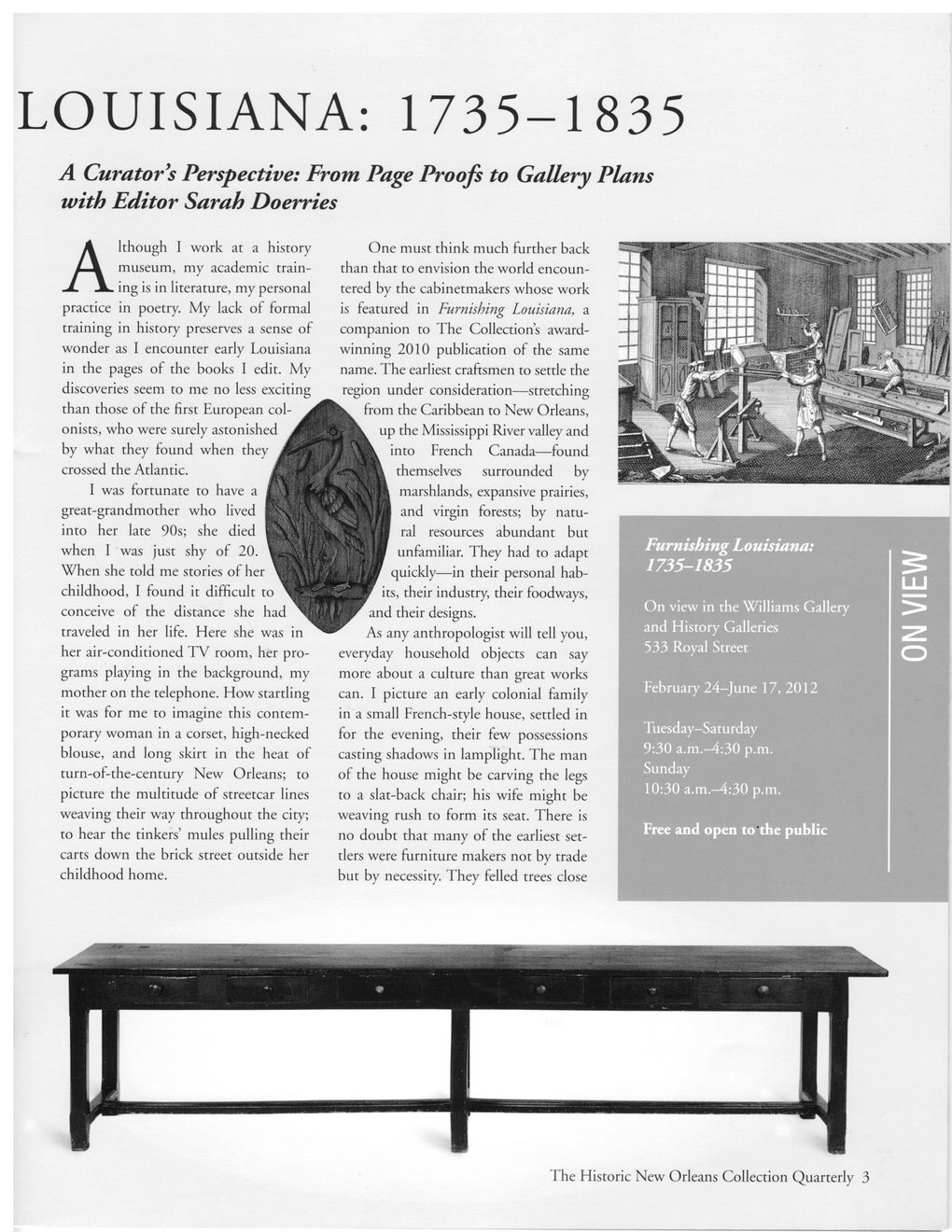This text was obtained via automated optical character recognition.
It has not been edited and may therefore contain several errors.
LOUISIANA: 1735-1835 A Curators Perspective: From Page Proofs to Gallery Plans with Editor Sarah Doerries Although I work at a history museum, my academic training is in literature, my personal practice in poetry. My lack of formal training in history preserves a sense of wonder as I encounter early Louisiana in the pages of the books I edit. My discoveries seem to me no less exciting than those of the first European colonists, who were surely astonished by what they found when they crossed the Atlantic. I was fortunate to have a great-grandmother who lived into her late 90s; she died when I was just shy of 20. When she told me stories of her childhood, I found it difficult to conceive of the distance she had traveled in her life. Here she was in her air-conditioned TV room, her programs playing in the background, my mother on the telephone. How startling it was for me to imagine this contemporary woman in a corset, high-necked blouse, and long skirt in the heat of turn-of-the-century New Orleans; to picture the multitude of streetcar lines weaving their way throughout the city; to hear the tinkers’ mules pulling their carts down the brick street outside her childhood home. One must think much further back than that to envision the world encountered by the cabinetmakers whose work is featured in Furnishing Louisiana, a companion to The Collection’s award-winning 2010 publication of the same name. The earliest craftsmen to settle the region under consideration—stretching from the Caribbean to New Orleans, up the Mississippi River valley and into French Canada—found themselves surrounded by marshlands, expansive prairies, and virgin forests; by natural resources abundant but unfamiliar. They had to adapt quickly—in their personal habits, their industry, their foodways, and their designs. As any anthropologist will tell you, everyday household objects can say more about a culture than great works can. I picture an early colonial family in a small French-style house, settled in for the evening, their few possessions casting shadows in lamplight. The man of the house might be carving the legs to a slat-back chair; his wife might be weaving rush to form its seat. There is no doubt that many of the earliest settlers were furniture makers not by trade but by necessity. They felled trees close Furnishing Louisiana: 1735-1835 On view in the Williams Gallery and History Galleries 533 Royal Street February 24-June 17, 2012 Tuesday-Saturday 9:30 a.m.-4:30 p.m. Sunday 10:30 a.m.-4:30 p.m. Free and open to the public The Historic New Orleans Collection Quarterly 3

New Orleans Quarterly 2012 Winter (03)